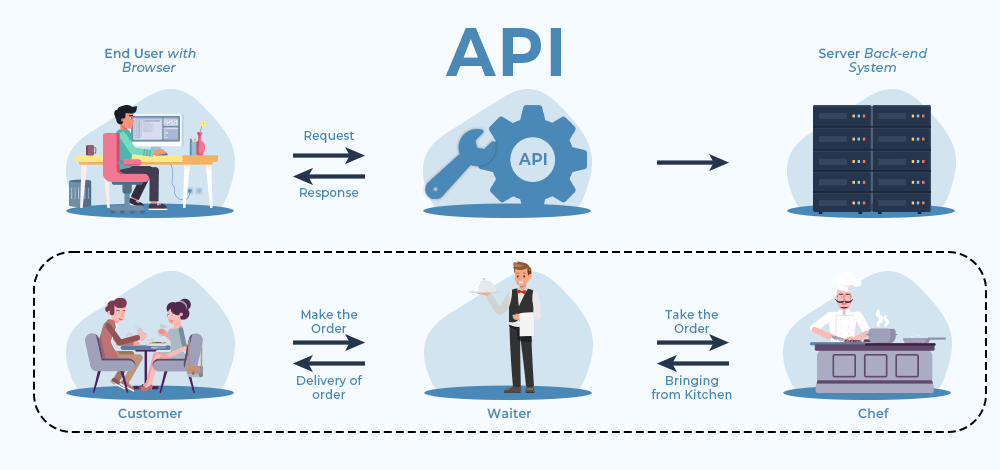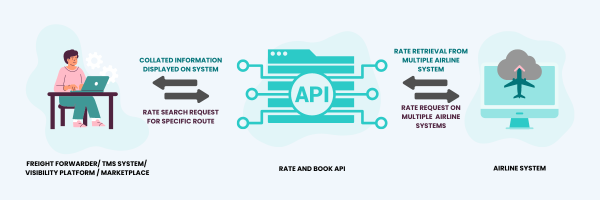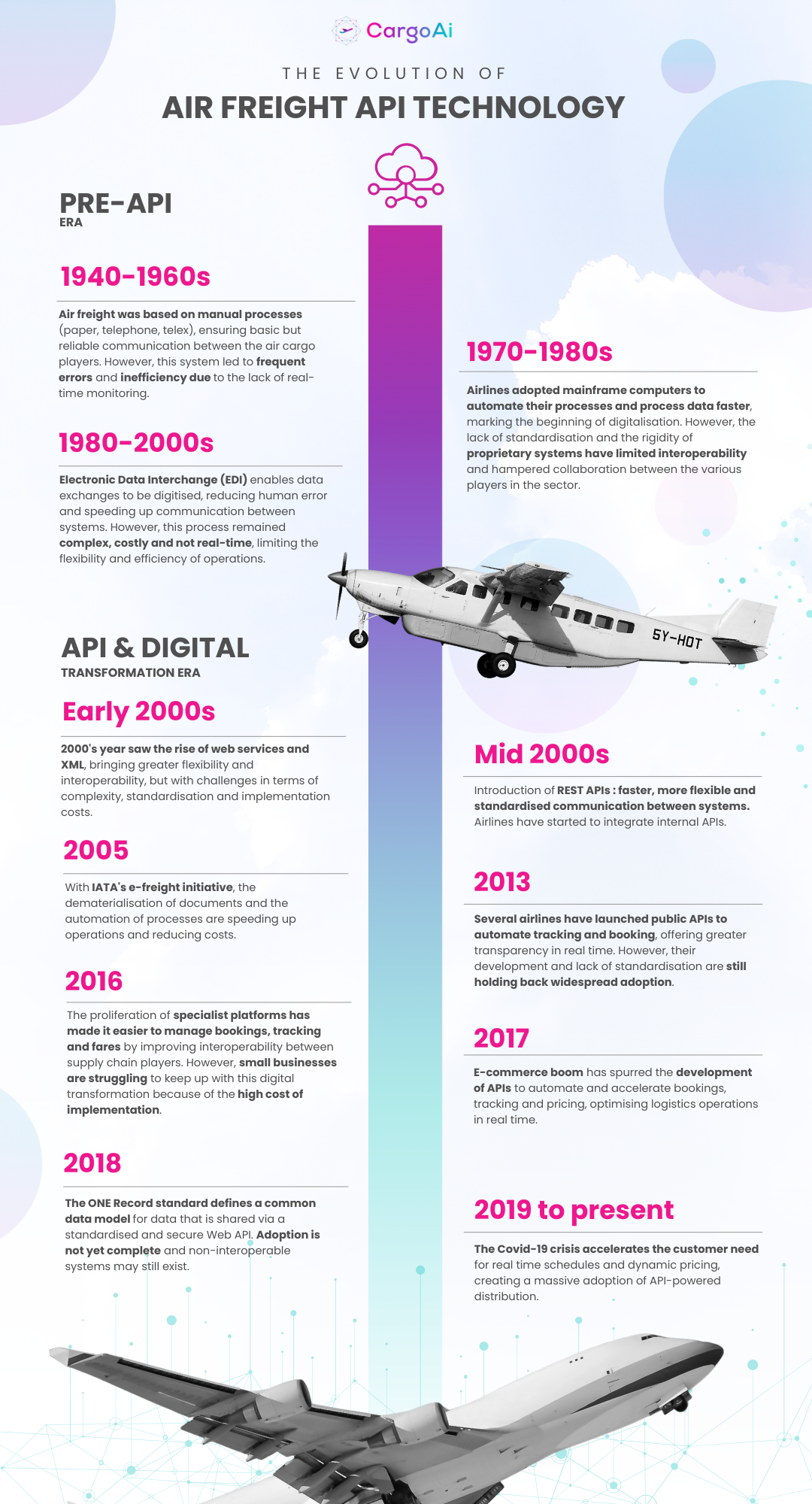
Understanding API Integrations and Their Impact on the Air Cargo Industry
In today's fast-paced digital world, businesses require efficient ways to manage operations and remain competitive. With the rise of 30-minute doorstep deliveries, expectations for high speed and real-time information tend to cross industry boundaries and impact airfreight service level expectation as well.
For the air cargo industry, leveraging technology is essential to streamline processes and enhance service delivery. For instance, reducing lengthy wait times in receiving shipment status updates, or simplifying the process of obtaining rates and confirming bookings from airlines. One technology that is revolutionizing business operations across industries is API integration. This article explores what APIs are and how they can significantly benefit the air cargo sector.
Understanding APIs and How They Work
An Application Programming Interface (API) is a set of protocols and definitions that allow different software applications to communicate with each other seamlessly. Think of an API as a translator between two people who speak different languages. By providing a common language, the API enables these two applications to exchange information in near real time and perform tasks together seamlessly.
Here's a basic explanation of how APIs work:
- Intermediary Role: They serve as intermediaries between different software systems, facilitating communication and data exchange.
- Defined Requests: They specify how requests should be made, what data formats to use, and the types of responses expected.
- Request and Response Process: When one system sends a request through an API, the receiving system processes it and returns the appropriate response.
- End Usage: The requesting application then uses this response to perform tasks, update interfaces, or provide information to users in near real-time.
API technology is deeply ingrained into our daily lives, often without us even realizing it. For instance, when you book a flight on a travel website, APIs access airline databases to retrieve flight details and present them to you in a user-friendly format. Even checking the weather on your smartphone or logging into your social media accounts involves API interactions. Without APIs, this kind of near real-time data exchange would be incredibly complex, manual and time-consuming.

Source: Geeksforgeeks
Imagine an API as a waiter in a restaurant: You tell the waiter what you want, they convey your order to the kitchen, and then deliver the prepared dish back to you. Similarly, APIs take requests, relay them to the system, and return the appropriate responses efficiently.
Visualizing API Integration in Air Freight:

CargoCONNECT Rate & Book API
Consider CargoCONNECT’s Rate and Book API as an example. In airfreight, a freight forwarder can use this API through its Transport Management System (TMS) to check available schedules, capacities, and rates directly from an airline's system. The forwarder's system would send a request to the airline's API and return the requested information in a predefined format. The API also facilitates instant e-bookings without human intervention, streamlining the entire process and reducing response times significantly.
Key Technologies Driving the Evolution of Real-Time Messaging in the Air Freight Industry

Early Communication Methods:
- Telephone & Telex: Long-distance communication offered basic, slow information exchange.
- Fax and Emails: Faster document transmission, but manual processing was still needed.
Electronic Data Interchange (EDI):
- 1970s: Enabled electronic exchange of structured data between computer systems.
- Challenges: Despite improving efficiency, EDI was complex, costly, and lacked real-time capabilities. Yet, EDI is still widely used in the industry.
- Cargo-IMP Standards: Built by SITA & IATA to standardize messaging in the air transport industry.
Introduction of XML and Web Services:
- Early 2000s: XML (eXtensible Markup Language) provided a flexible and interoperable data exchange format, paving the way for modern APIs.
- Benefits over EDI: XML's flexibility, readability and ability to represent complex data, made data exchange more efficient and adaptable. XML's widespread adoption enabled data exchange across systems, with custom tags for describing any information type. EDI uses fixed formats for specific business transactions, ensuring uniformity but offering less flexibility than XML.
Rise of APIs and Digital Transformation:
- Mid-2000s: REST APIs gained popularity, initially for internal integrations within airlines.
- IATA's e-Freight and eAWB Initiative (starting 2005): With the aim to build an end-to-end paperless transportation process for air cargo this initiative accelerated digital adoption and standardization in the industry. Read more about it here.
- Public API Adoption (2013-onwards): Major airlines began offering APIs for tracking, scheduling, and booking. Airlines are still launching APIs.
- Around 2016, APIs started to proliferate across the airfreight industry, leading to the creation of specialized API marketplaces.
E-commerce Boom and Further Developments:
- 2017 Onwards: Surge in e-commerce increased demand for rapid deliveries and real-time data exchange. This heightened the need for technologies to speed up rate securing, shorten booking cycles, and adopt digital solutions like eAWBs.
- ONE Record Initiative (2018-onwards): Aims to standardize data sharing with a single shipment record view using web API. Read more about IATA’s ongoing project here.
- Impact of COVID-19 (from 2019): Covid triggered a massive change towards spot rates, dynamic pricing and iso static rates, and is now demanding a massive adoption of APIs in the entire ecosystem to serve client needs for instant schedule and rates visibility. Spot rates became a norm, favoring those who could secure air cargo rates most efficiently and provide quick and accurate shipment tracking in times of reduced capacity.
Despite these recent advancements, many in the airfreight industry today still rely on manual processes, paper documentations, email exchanges and making numerous phone calls. While APIs have improved real-time interactions and data exchange, the industry still has a long way to go for full digitalization as rare, outdated technologies like telex numbers and fax machines are still used in some parts of the industry.
The Role of APIs in the Air Cargo Industry
Solutions like CargoAi’s CargoCONNECT API portfolio, empower air cargo stakeholders with dynamic tools to request, retrieve and exchange information efficiently. These new capabilities can significantly enhance business performance and streamline operations in the following ways:
Routes & Schedule Mapping: Route APIs can provide near real-time visibility into air cargo schedules, aircraft types, and upcoming flights, enabling efficient route mapping and supply chain planning with any airline.
Streamlining scheduling and booking: The air cargo industry is dynamic, with ever-fluctuating rates. Rate and Booking APIs provide instant access to airlines’ current capacity and rates, enabling instant booking and competitive pricing, eliminating manual approval processes.
Enhancing shipment milestone visibility: Tracking APIs are connected directly with airlines and other tracking sources to retrieve shipment milestone updates, enabling stakeholders to monitor cargo statuses directly within their systems with a much lower latency compared to legacy solutions, like EDIs, etc.
Sustainability tracking: With the growing emphasis on sustainability in the air freight industry, APIs can help companies work towards green goals by tracking carbon emissions at shipment-level.
AI powered insights: AI-powered APIs can transform raw data into actionable insights by processing and analyzing information intelligently enhancing decision-making and streamlining workflows for more efficient operations.
Automated payments & reconciliation: Systems can use APIs to integrate with finance and accounting workflows, automate payments and reconciliation, and simplify team interactions.
Managing Air Waybills: APIs can automate document generation and management, including AWBs, ensuring compliance and reducing admin tasks. FWB&FHL messages are transmitted to airlines, eliminating the need for physical printing and handling of paper AWBs.
The possibilities are limitless, and that’s what is most exciting.
Quick introduction to CargoCONNECT’s APIs for all the above use cases:
- Route & Schedule: Real-time schedule visibility
- Rate & Book: Access airline rates, capacity & Direct Booking
- Track & Trace: Shipment milestone tracking
- Cargo2ZERO: CO2 & Carbon emission monitoring
- CargoCOPILOT: AI-Driven operational insights
- CargoWALLET: Automated financial processes & settlements across the supply chain
- FWB & FHL API: Digital document generation & management
Conclusion
API integrations have emerged as a pivotal technology in the air cargo industry, revolutionizing the way businesses operate and interact with one another. By providing a seamless bridge between different software systems, APIs enable near real-time data exchange, automation, and improved efficiency.
From enhancing shipment visibility to streamlining scheduling and booking processes, APIs offer many benefits that can significantly impact the bottom line. As the industry continues to evolve and embrace digital transformation, the adoption of API-based solutions will be essential for staying competitive and meeting the growing demands of customers. By leveraging the power of APIs, air cargo stakeholders can unlock new opportunities, optimize operations, and drive innovation.
Stay tuned for our next blog post on choosing between managed platforms and APIs and understanding how APIs can be beneficial to a business.
Learn more about our CargoCONNECT API portfolio for air cargo by downloading our brochure or reaching out to our Support team.